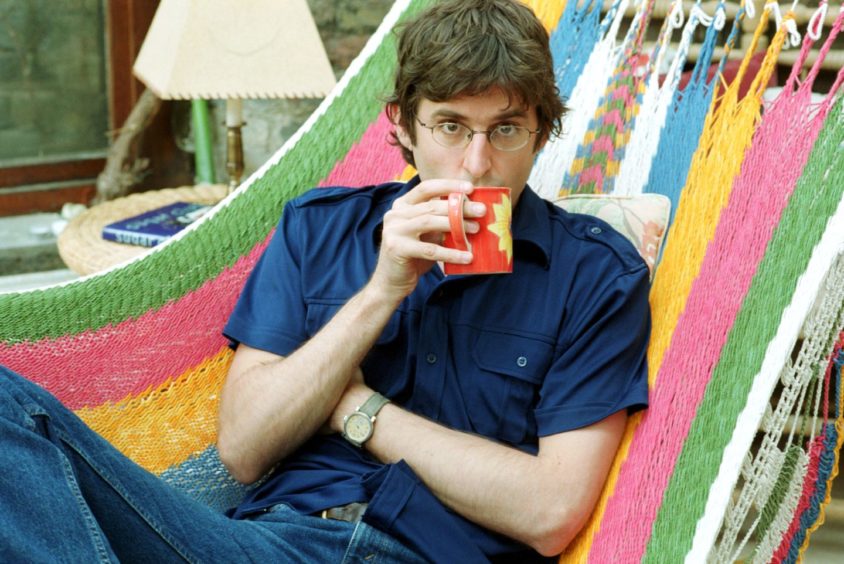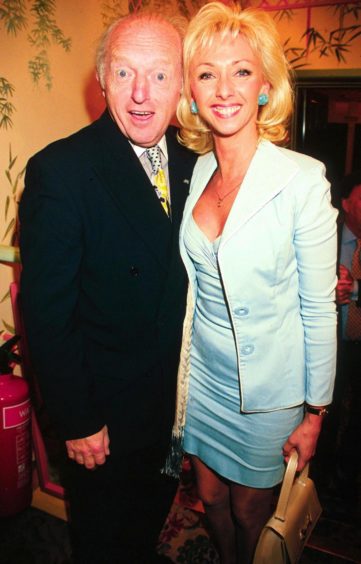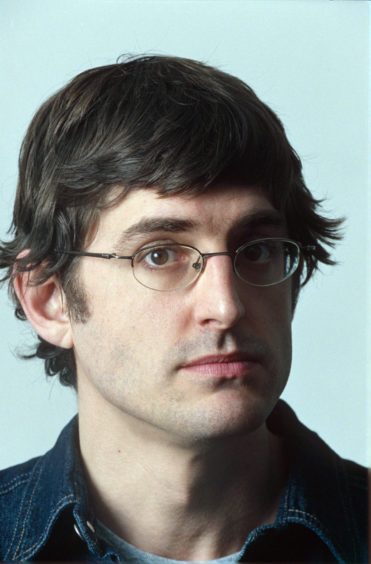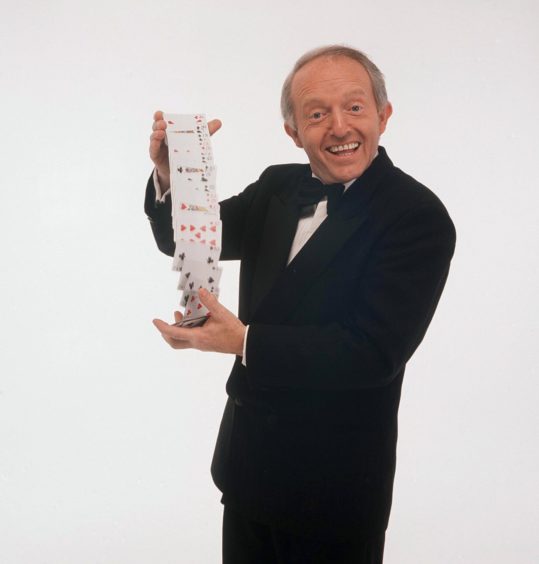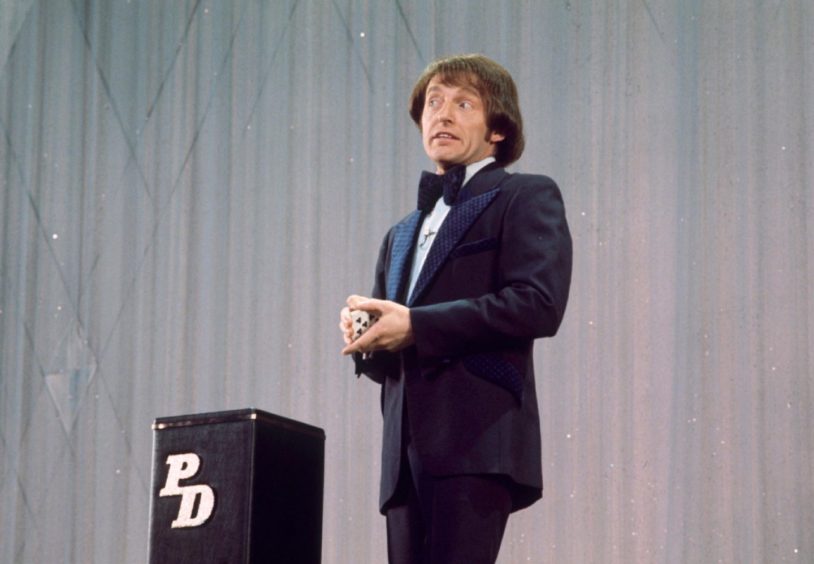Journalist and filmmaker Louis Theroux is known for taking a walk on the wild side.
For the past 25 years, he has been making and presenting television programmes featuring quirky subjects, ranging from UFO investigators to committed Nazis, Miami mega jail inmates to big-game trophy hunters.
He has also tackled topics including Jimmy Savile, Michael Jackson and Scientology in his TV specials over the years.
But it was a trip to Dundee 20 years ago that turned out to be just as strange for the BBC documentary-maker when the magic powers of Paul Daniels were unable to extend the size of the Bonar Hall stage.
Paul and his wife Debbie McGee cancelled the Dundee leg of their touring ballet production due to lack of space but some thought the decision was because only 80 tickets had been sold.
Too small
Paul and Debbie’s production team arrived at the venue and decided it was simply too small to stage a performance.
Debbie and Paul were then quickly called to the Bonar Hall and agreed that the show could not take place because there was too little space for the stage designs, and a fear that the lighting rigs would be unable to take the weight of the show’s visual effects which were being handled by Paul.
Dundee University, which operated the Bonar Hall, expressed their disappointment at the decision and said Paul knew the measurements of the Bonar Hall stage well in advance.
“There is not enough room for the stage props to decorate the back of the hall, but we thought we could just put the show on without them,” said Debbie.
“However it then became obvious that the lighting rigs probably weren’t strong enough to hold our effects, and that they also hung down so low that our dancers would not have been able to jump.”
To add to the confusion surrounding the Dundee leg of the tour, BBC cameras were also filming the showbiz couple’s movements for a Louis Theroux documentary which has now gone down in TV history.
Paul, Debbie and Louis unexpectedly found themselves at the centre of a media storm after the plug was pulled on the show and Paul and Debbie expressed their remorse in a series of interviews but the footage ended up on the cutting room floor.
Final cut
TV critic Paul Whitelaw said he was surprised the disappearing stage episode didn’t make the final cut for When Louis Met Paul and Debbie as “when things went wrong with McGee’s ballet tour, Daniels knew fine well that Theroux was absolutely delighted”.
“In terms of his career and approach to making programmes, the When Louis Met… series is caught between Theroux’s ‘early, funny’ Weird Weekends phase and the far more serious documentaries he’s been making since 2003,” he said.
“It’s notable in that, due to his fame, all the celebrities he met were fully aware of who he was.
“Thanks to the success of Weird Weekends, Theroux himself had become a celebrity of sorts.
“That worked against him to an extent, as his faux-naïve shtick doesn’t really work when his subjects are wise to it.
“That’s particularly apparent in the Paul Daniels episode.
“Daniels was a shrewd professional, he’d studied Theroux’s methods and knew exactly what he was up to.
“Hence why he sometimes came across as quite difficult and defensive. You can’t trick a trickster, especially one as talented as Daniels.
“Things going wrong makes for good television, Daniels was all too aware of that.”
Wry Theroux
Mr Whitelaw said Theroux himself came to realise that he’d painted himself into a corner, and that a change of direction was needed.
He said: “He could no longer make celebrity-focused programmes, as no one, understandably, wanted to receive the sly, wry Theroux treatment.
“His main skill as an interviewer in those days was to gently ask direct – and sometimes quite impertinent – questions, then stand back as his interviewees revealed more about themselves than perhaps they’d intended.
“A sort of Columbo approach.
“But there’s only so far you can go with that.
“I think Theroux has been responsible for some of the best TV documentaries of the last 20 odd years.
“Even in his younger, more light-hearted days, he always displayed commendable empathy.
“He’s intelligent, non-judgemental and genuinely inquisitive.
“He wants to know what makes people tick, he wants to understand them.
“He’s an excellent journalist.”
The Dundee curse struck again in 2009 when Paul was forced to cancel a planned appearance in the city.
The magician and his wife were due to perform a range of tricks at the Whitehall Theatre during an evening of “magic, music, special effects and glamorous entertainment” before the show was called off after just a handful of tickets were sold.
The man with the magic touch
One of the most famous magicians of the 20th century, Paul Daniels was a performer with a magic touch who entertained TV audiences for decades.
His hit TV show, The Paul Daniels Magic Show, regularly attracted audiences of 15 million in the UK, and was sold to 43 countries.
Born Newton Edwards Daniels in Middlesbrough in 1938, he became interested in magic as a young child.
But it wasn’t until 1969 that he became a full-time magician when he performed a summer season at Newquay.
The following year, Paul came second in talent show Opportunity Knocks, which led to him being offered a regular slot on the ITV variety show The Wheeltappers And Shunters Social Club which was presented by Bernard Manning.
In 1979, The Paul Daniels Magic Show hit UK screens on the BBC, and the magician became a household name.
Famous for his self-deprecating humour, his catchphrase was: “You’ll like this … not a lot, but you’ll like it.”
It was at auditions for the hit show that he met his second wife, Debbie McGee.
Marriage
At this point, he was separated from his first wife Jacqueline, with whom he had three sons, Paul, Martin and Gary.
When Debbie met Paul, she was a soloist in the Iranian National Ballet in Tehran who had been forced to flee the country when the 1979 Iranian Revolution broke out.
After auditioning, the successful ballerina was initially disappointed to be selected for The Paul Daniels Show in Great Yarmouth.
“I had no idea who he was or what he did. People told me he was a magician, and my heart sank,” she said.
“Then I saw him on TV at a friend’s house, on the quiz show Blankety Blank. He was very funny – he took his jacket off and had a Superman T-shirt on and red knickers over his trousers. I was in hysterics,” she added.
The couple married in 1988, and she continued to be his magic assistant on the show until it was axed in 1994.
Paul also presented game shows in the 1980s and 90s such as Wipeout, Every Second Counts and Odd One Out.
He also participated in various TV shows including Channel 5′s The Farm, BBC One’s Strictly Come Dancing, ITV’s The X Factor: Battle Of The Stars and Channel 4′s Celebrity Wife Swap, in which Paul tried living with Vanessa Feltz.
His wit, charm, and magic skills earned him a reputation which meant that he performed to Princes William and Harry, Prime Ministers John Major and James Callaghan, Prince Rainier of Monaco and others.
He was awarded the “Magician of the Year” Award by the Academy of Magical Arts in 1982, the first magician from outside the United States to receive it. He also won the Golden Rose of Montreux in 1985.
Paul was famous for his close-up magic and entertainment shows, but was less known for his special effects work.
He designed the special effects for the stage productions of Cats and Phantom Of The Opera, and was commissioned by the English National ballet to create magical effects for The Nutcracker.
Brain tumour
In his later years, Paul and his wife toured the country with magic and comedy shows, entertaining old fans and new generations alike with his skills.
It was on February 20 2016 that news broke of his illness.
The statement, released on his website, said: “We can confirm that one of our greatest magicians and entertainers of all times, Paul Daniels, has sadly been diagnosed with an incurable brain tumour.
“On behalf of Paul, Debbie, and their families, we thank you for your kind concerns and support at this sad time and ask that their privacy continues to be respected.”
He died less than a month later, on 17 March, at the age of 77.
Tributes included one from fellow magician Dynamo who said: “Paul was truly a giant of the entertainment world who really defined magic for over 20 years,” he said. “As a working-class magician from the North, he was personally a huge inspiration for me and I know that he has inspired countless magicians around the world and will forever be known as one of the all-time greats.”
In 2013 Paul told The Guardian: “Death isn’t scary – it’s just like going to sleep. It doesn’t bother me because when your time’s up, your time’s up. Some people can’t take that.”

